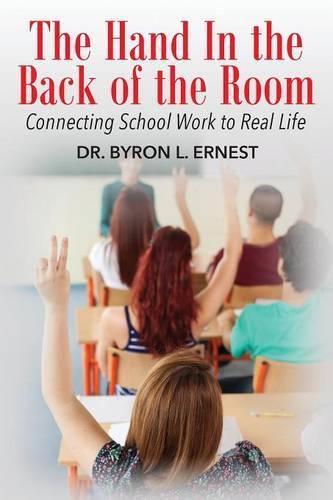Readings Newsletter
Become a Readings Member to make your shopping experience even easier.
Sign in or sign up for free!
You’re not far away from qualifying for FREE standard shipping within Australia
You’ve qualified for FREE standard shipping within Australia
The cart is loading…






This title is printed to order. This book may have been self-published. If so, we cannot guarantee the quality of the content. In the main most books will have gone through the editing process however some may not. We therefore suggest that you be aware of this before ordering this book. If in doubt check either the author or publisher’s details as we are unable to accept any returns unless they are faulty. Please contact us if you have any questions.
This Book Contains Research-Proven Methods for Improving Learning by Using Relevant and Real World Contexts. The challenge to all of us in education is to find ways to make learning visible by connecting school work and real life for the students we serve. One of the ways to do that is to call on the hand in the back of the room and answer why with real world relevancy. Students’ understanding, mastery of basic science curriculum, and ability to use science concepts have been shown to improve when the science concepts were taught in the relevant and real world context of agriculture. Teachers many times fail to provide a context through observations, inferences, and actions appropriate for students to make the connection to the real world. These connections help the students to understand higher-level science concepts. Through his research, Byron Ernest investigated low student achievement in science and the social change impact of real world application through a study of agricultural science. Other current research on teaching science in a relevant context and the opportunities for cross-curricular collaboration are also discussed. Ernest examined using transformative educational strategies to help students move from memorizing facts and content to constructing knowledge in meaningful and useful ways. With collaboration and shared knowledge creation, through the learning organization, teachers begin to understand how to break down the walls of isolationism. When the teachers realize what each department or subject area does impacts the other, and more importantly their students, then the science, agriculture, and other departments can work together to share best practices. The ultimate goal of education is to improve student achievement and performance, and the contents of this book reveal that teaching science in a relevant context could positively impact this achievement and performance.
$9.00 standard shipping within Australia
FREE standard shipping within Australia for orders over $100.00
Express & International shipping calculated at checkout
This title is printed to order. This book may have been self-published. If so, we cannot guarantee the quality of the content. In the main most books will have gone through the editing process however some may not. We therefore suggest that you be aware of this before ordering this book. If in doubt check either the author or publisher’s details as we are unable to accept any returns unless they are faulty. Please contact us if you have any questions.
This Book Contains Research-Proven Methods for Improving Learning by Using Relevant and Real World Contexts. The challenge to all of us in education is to find ways to make learning visible by connecting school work and real life for the students we serve. One of the ways to do that is to call on the hand in the back of the room and answer why with real world relevancy. Students’ understanding, mastery of basic science curriculum, and ability to use science concepts have been shown to improve when the science concepts were taught in the relevant and real world context of agriculture. Teachers many times fail to provide a context through observations, inferences, and actions appropriate for students to make the connection to the real world. These connections help the students to understand higher-level science concepts. Through his research, Byron Ernest investigated low student achievement in science and the social change impact of real world application through a study of agricultural science. Other current research on teaching science in a relevant context and the opportunities for cross-curricular collaboration are also discussed. Ernest examined using transformative educational strategies to help students move from memorizing facts and content to constructing knowledge in meaningful and useful ways. With collaboration and shared knowledge creation, through the learning organization, teachers begin to understand how to break down the walls of isolationism. When the teachers realize what each department or subject area does impacts the other, and more importantly their students, then the science, agriculture, and other departments can work together to share best practices. The ultimate goal of education is to improve student achievement and performance, and the contents of this book reveal that teaching science in a relevant context could positively impact this achievement and performance.